Just how big is China’s Navy? Bigger than you think
- By Alex Hollings
Share This Article

If war were to break out in the Pacific between China and the United States, the U.S. Navy would find itself in an extremely difficult predicament. While America does maintain the largest and most powerful navy on the globe, its security obligations are similarly far-reaching. America’s Navy serves as more than a defensive force for the nation and even more than a means of force projection to back American foreign policy. The United States Navy also serves as a stabilizing presence in shipping lanes the world over, ensuring the free trade of goods over heavily trafficked waterways that could otherwise be susceptible to the whims of bad state actors or even smaller pirate or terrorist regimes.
As a result of these obligations, the United States Navy can’t actually leverage the entirety of its sea-power in any one region without leaving security and stability operations elsewhere in the world ignored. And therein lies the source of a great deal of confusion when it comes to comparing military strengths on a global scale. Many Americans are quick to point out that the U.S. has the most powerful military force, and therefore, should be able to exact quick and definitive victory over the opposition posed by less technologically advanced forces like the People’s Liberation Army-Navy China employs to defend its interests in the Pacific. While a comparison of aircraft carriers suggests a rapid American victory, a comparison of forces that could actually be leveraged in such a conflict doesn’t paint quite as rosy a picture for American analysts.
The truth is, despite America’s navy power, China could actually devote far more combatant resources to a fight in the Pacific than America likely could, in part because of the aforementioned limitations on America’s defense apparatus, and also because China’s Navy isn’t the only force Americans would find themselves squaring off against. China would almost certainly also leverage their Coast Guard and even Maritime Militia in such a conflict, in addition to the nation’s massive stockpile of ballistic missiles, including hypersonic anti-ship missiles that America currently lacks any means of reliable defense against.
China’s Maritime Militia
Chinese-based analysts often discount china’s rarely discussed Maritime Militia for good reason. The intent behind utilizing such a force is to conduct military operations that fall within the “Grey Zone,” which is a term used to characterize aggressive actions that don’t quite meet the criteria to be considered an overt act of war. Grey Zone operations have become an area of increasing focus for nations like China and Russia, who use things like China’s Maritime Militia or Russia’s mercenary Wagner Group to conduct what are effectively military operations outside the formal purview of their parent state. In other words, China uses its fleet of large fishing boats, and Russia uses its private mercenaries to conduct offensive operations each respective government can then deny responsibility for, as we’ve seen in places like Libya, Syria, and the South China Sea in recent years.
However, despite Chinese officials and media personalities discounting the presence of China’s Maritime Militia, satellite imagery and eyewitness reports continually show these large fishing ships conducting aggressive operations against foreign vessels, and even China’s Military Service law outlines in clear language what role these vessels play in China’s military apparatus:
China’s Military Service law, which was first written in 1984 and then revised in 1998, orders the Maritime Militia “to undertake the duties related to preparations against war, defend the frontiers and maintain public order; and be always ready to join the armed forces to take part in war, resist aggression and defend the motherland.”
It’s important to note that China considers the entirety of the South China Sea to be China’s frontier in need of defending, despite the international consensus that China’s claims over the waterway are illegal.
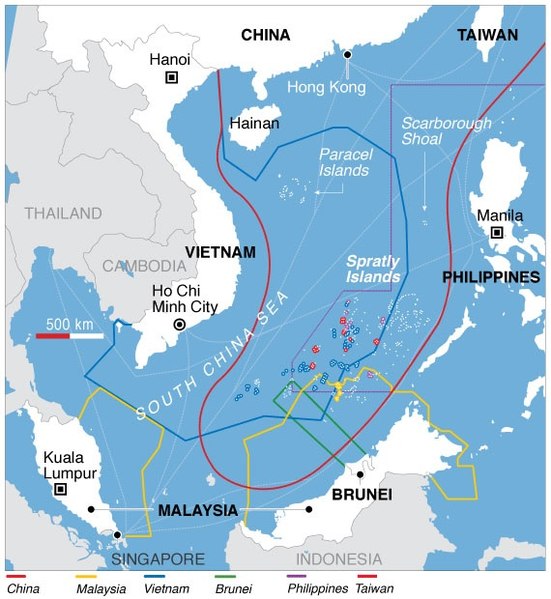
Related: What are FONOPs, and why are they important?
China’s massive Maritime Militia fleet of fishing vessels is numbered in the hundreds and, it’s important to note, this militia is made up of vessels reaching as large as 500 tons in size. These aren’t recreational fishing boats — they’re deep sea-capable vessels that routinely turn off their legally mandated Automatic Identification System (AIS) transceivers to make it nearly impossible for nations other than China to accurately track the size or location of their presence. Satellite imagery shows that these vessels very rarely deploy actual fishing equipment and instead spend a great deal of their time anchored–which, while entirely unprofitable, is perfectly in keeping with the understanding that these ships are not actually intended for commercial use.
“On a day-to-day basis it serves as a logistics and surveillance arm of the PLA, ferrying supplies to Chinese outposts, monitoring and reporting on the activities of other claimants, and engaging in joint training exercises with the military and law enforcement. But they also move into more direct harassment of other nations’ vessels when called up—maneuvering dangerously close to foreign naval, law enforcement, and civilian vessels, sometimes shouldering and ramming them, and in general making it unsafe for other parties to operate in areas contested by Beijing, all while the PLA and China Coast Guard are kept in reserve as an implicit threat with a level of deniability.”
-Gregory Poling, director of the Asia Maritime Transparency Initiative and a fellow in the Southeast Asia Program at the Center for Strategic and International Studies in Foreign Policy magazine.
Recent estimates place the total number of vessels in China’s Maritime Militia at approximately 300 ships operating within the South China Sea.
China’s military Coast Guard
Likewise, China’s Coast Guard is widely seen as the most powerful such force in the world. It was originally established as the maritime security arm of the Public Security Border Troops, a paramilitary organization under China’s Ministry of Public Security (MPS). Today, the Coast Guard falls under the command of China’s Central Military Commission (CMC). This transition was a complex one, and I recommend reading Lyle Morris’ “China Welcomes its newest armed force: The Coast Guard” on War on the Rocks if you’d like to learn more about how it happened.
Although the Chinese Coast Guard is formally tasked with law enforcement and rescue operations, it is often leveraged in territorial disputes just as the Maritime Militia is. For example, coast guard vessels were used to blockade the Scarborough Shoal during a dispute over the sovereignty of the shoal with the Philippine government that began in 2012. The blockade remained active until 2016 when China seized control of the landmass.
“The evidence is clear that there is a pattern of behavior from China that is contrary to what law enforcement usually involves. We’re seeing bullying, harassment and ramming of vessels from countries whose coast guard and fishing vessels are much smaller, often to assert sovereignty throughout the South China Sea.”
-Bonnie Glaser, regional security expert at Washington’s Center for Strategic and International Studies
Much like China’s military modernization efforts, the Chinese Coast Guard has undergone a similar revamp in recent years. Over 100 new Coast Guard vessels have been launched in just the past 7 years, making China’s Coast Guard a rival to some national navies in the region. Among these new vessels are at least two 12,000 ton cutters that are significantly larger than the U.S. Navy’s 9,800-ton Ticonderoga-class guided-missile cruisers. These vessels are equipped with 76mm rapid-fire guns as well as close-in auxiliary and anti-aircraft machine guns, along with a helicopter deck and hangar facilities for rotary-wing assets and UAVs.
Other Chinese Coast Guard vessels of note include at least six 3,500 ton Type 818 patrol ships. These vessels share a hull with China’s Type 054A Jiangkai II-class frigates and carry a 76mm PJ-26 naval gun as each vessel’s primary weapon, alongside other smaller weapon systems. Unlike China’s Frigates, however, these large vessels do not carry anti-ship or surface-to-air missiles. Other Coast Guard vessels based on Chinese Navy designs include China’s newest cutters, which were based on their Navy’s 1500 ton Type 056 Jiangdao-class corvettes.

Related: Philippine official goes off about China’s aggression in Twitter rant
All told, China’s Coast Guard now boasts 135 total vessels, all of which fall under the direct control of China’s People’s Liberation Army-Navy, making them a practical addition to China’s continuously growing Navy numbers.
According to the Center for Strategic and International Studies (CSIS), China’s Coast Guard is actually the most common element in China’s territorial disputes with other nations. Out of 45 clashes recorded since 2010 in the region, China’s Coast Guard was present in no fewer than 30 incidents. Only four of those clashes involved Chinese naval vessels without a Coast Guard presence.
The People’s Liberation Army-Navy
China’s rapidly expanding Navy is no stranger to the spotlight. For years now, China has grabbed headlines with the launch of new and technologically advanced vessels like their Type 052D guided-missile destroyers that are widely believed to be comparable to America’s own Arleigh Burke-class destroyers. A great deal of attention has also been paid to China’s home-grown aircraft carriers, like the Type 002 that is currently undergoing final assembly. Once completed, China will have three operational aircraft carriers in the Pacific.
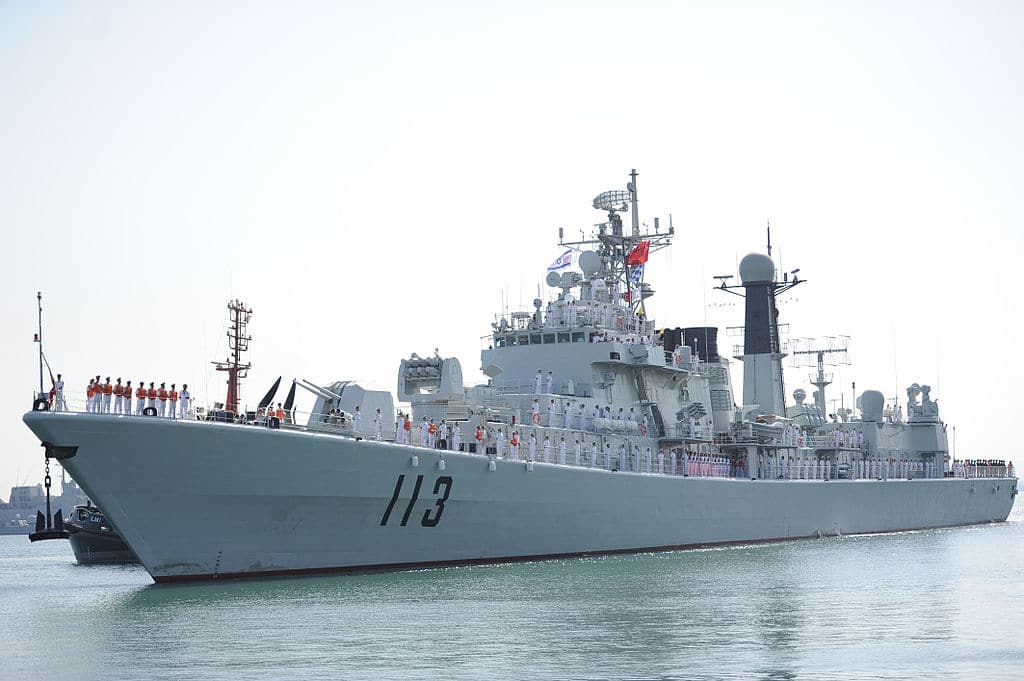
Related: China’s next carrier fighter will likely be based on stolen F-35 plans
This new carrier is expected to be a technological leap over China’s two Type 001 carriers: one of which was built on a former Soviet hull, while the other was built using many design cues from the first. However, none of these carriers, including the new Type 002, possess the same nuclear power America’s supercarriers boast. As we’ve discussed before, China also lacks any appreciable combat experience among its strike group commanders and the nation currently lacks a reliable carrier-based fighter. Efforts are already underway to mitigate each of these three serious weaknesses, but what China may lack in these regards, it more than compensates for in sheer volume.
Between 2005 and 2019, China’s navy grew by an astonishing 55 percent, increasing it’s total number of vessels to a staggering 335 ships, according to a Congressional Research Service report entitled, “China’s Naval Modernization: Implications for U.S. Navy Capabilities — Background and Issues for Congress.”
To give you another sense of just how rapidly China’s Navy has grown, Nick Childs, a senior fellow for naval forces and maritime security at the London-based International Institute for Strategic Studies, told National Defense earlier this year that “during a recent four-year period the naval vessels that Chinese shipyards produced were roughly equivalent in tonnage to the entire U.K. Royal Navy or the Japanese Maritime Self-Defense Force.”
And, it’s important to note, China is showing no signs of stopping, despite occasional setbacks making their way to the media. Retired U.S. Navy Captain James Fanell, who previously served as head of intelligence for the Pacific Fleet, estimates that the Chinese navy will continue to grow rapidly in the coming years and by 2030, will have a whopping 450 surface vessels and another 110 submarines at its disposal, outside of the supplemental forces provided by the Coast Guard and Maritime Militia.
“Given the past 20-year trajectory of PRC naval ship construction, the PRC’s expressed desire and ability to continue to increase its spending on naval shipbuilding, the cost advantages its shipbuilding industry enjoy compared to foreign naval shipyards and Chinese shipbuilders’ continued trend of indigenous technical mastery of complex designs and systems integration, I expect the PLA navy will continue to surpass the U.S. Navy in the number of warships built for the foreseeable future.”
Capt. James Fanell (retired), former head of intelligence for the US Navy’s Pacific Fleet.
How does the U.S. Navy stack up?
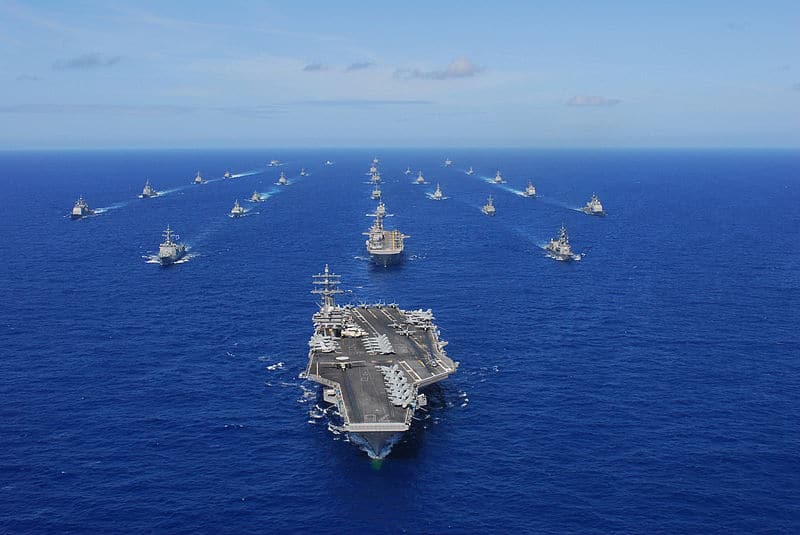
In total, when considering the 2019 strength estimates of the Chinese Navy, estimates of China’s Maritime Militia strength, and total figures attributed to China’s Coast Guard, the People’s Liberation Army-Navy has roughly 770 vessels operating in the Pacific. It’s important to note that these vessels range widely in terms of military capability and purpose. Some more modern ships were designed for a wide variety of mission sets, while many less capable vessels are intended for only very specific operations. Nonetheless, this figure represents an astonishing amount of naval power consolidated into a far smaller area than America’s own Navy.
The U.S. Navy currently operates around 293 total vessels, which is only two ships more than it did more than a decade and a half ago. President Trump campaigned on and has continued to push for a larger Naval force of 355 ships, but current estimates suggest that will be impossible unless the Navy sees a significant increase in its ship-building budget.
Included in that total are 69 nuclear submarines, and although orders are in place new Virginia-class and Columbia-class subs, most of these will replace older vessels like the Navy’s aging Ohio-class. China is expected to be operating as many as 70 submarines by the close of this year, though most of these subs are diesel-electric, rather than nuclear powered like America’s.

Lest you dismiss these non-nuclear platforms, however, it’s important to note that a Swedish Navy Gotland-class diesel-electric sub managed to successfully “sink” the Nimitz-class USS Ronald Reagan aircraft carrier in a series of war games in 2004.
The United States Navy would not be able to dedicate the entirety of its fleet to combat operations in the Pacific, nor could it leverage the full brunt of America’s Coast Guard, placing U.S. forces at a significant disadvantage in terms of numbers alone in a Pacific conflict. Of course, technology is a considerable force multiplier, and America’s more advanced platforms, coupled with America’s far more experienced troops and commanders, may be enough to offset China’s numerical advantage.
The use of stealth aircraft like carrier and amphibious assault ship-based F-35s (with added range granted by the forthcoming MQ-25 Stingray refueler drones), along with U.S. Air Force long-range bombers like the B-2 Spirit and forthcoming B-21 Raider may even be enough to steal victory away from China’s clutches in such a future conflict.
“U.S. and other observers generally assess that while the United States today has more naval capability overall, China’s naval modernization effort has substantially reduced the U.S. advantage, and that if current U.S. and Chinese naval capability trend lines do not change, China might eventually draw even with or surpass the United States. In the South China Sea, some observers are concerned that China has already drawn even with or even surpassed the United States.”
-Ronald O’Rourke, naval specialist at the Congressional Research Service
Of course, the best way to win such a war would be to avoid it in the first place, without losing grip of America’s lead in the realms of diplomacy and international commerce. But even with the understanding of that aim, doing so will require a U.S. military that’s capable of standing up to China’s massive Pacific presence. Deterrence, at the end of the day, is all about avoiding war through the threat of a fight that would be too costly to stomach.
Read more from Sandboxx News:
- What is the South China Sea and why is the US Navy challenging China there?
- A new Cold War with China may be brewing
- The Chinese military will outmatch the US in the Pacific by 2025
- DoD map shows Russian and Chinese subs are too close for comfort
- American Pirates? US privateers could help win a war with China
This article was originally published 10/21/2020
Related Posts
Sandboxx News Merch
-

A-10 ‘Thunderbolt Power’ Poster
$22.00 – $28.00 Select options This product has multiple variants. The options may be chosen on the product page -

F-35 ‘Lightning’ Poster
$22.00 – $28.00 Select options This product has multiple variants. The options may be chosen on the product page -

F-35 ‘Evolution’ Poster
$22.00 – $28.00 Select options This product has multiple variants. The options may be chosen on the product page

Alex Hollings
Alex Hollings is a writer, dad, and Marine veteran.
Related to: Military Affairs
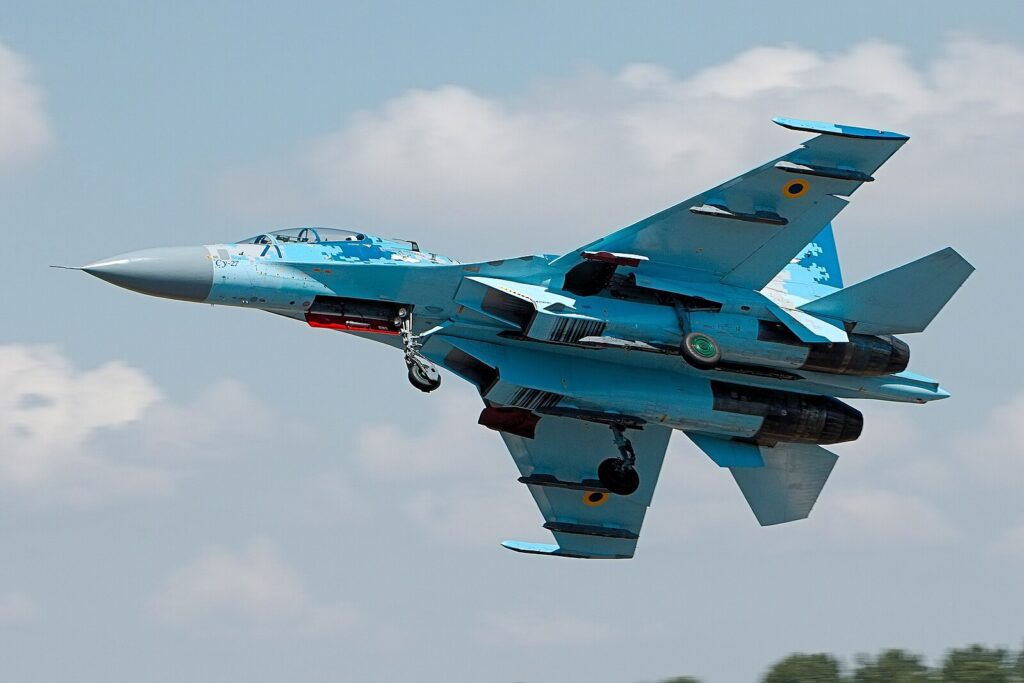
Where do NATO reporting names come from?

How US Special Forces took on Wagner Group mercenaries in an intense 4-hour battle
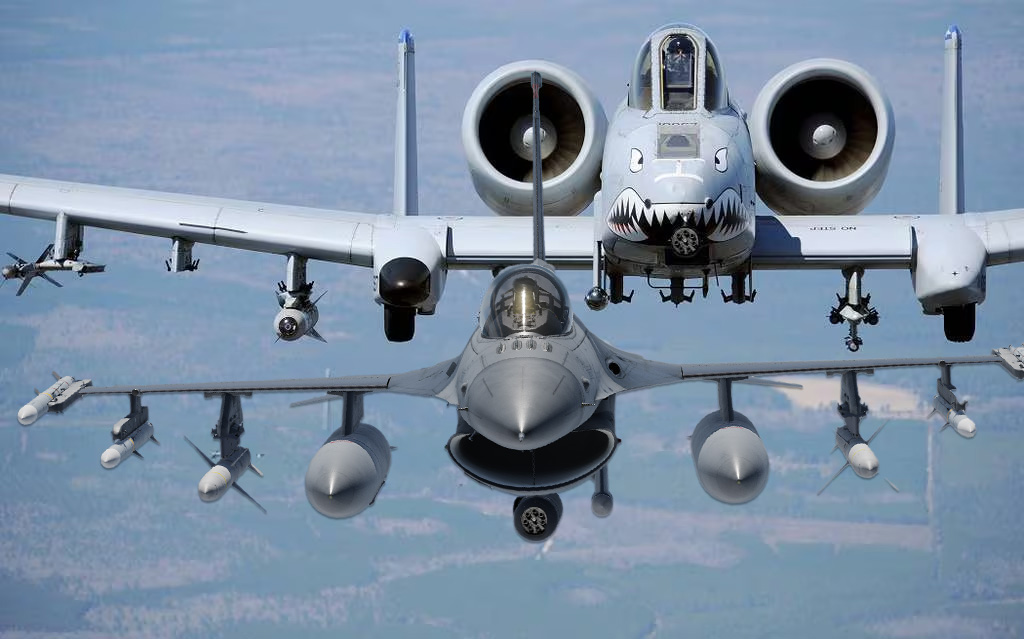
F-16s carrying the A-10’s 30mm cannon actually saw combat
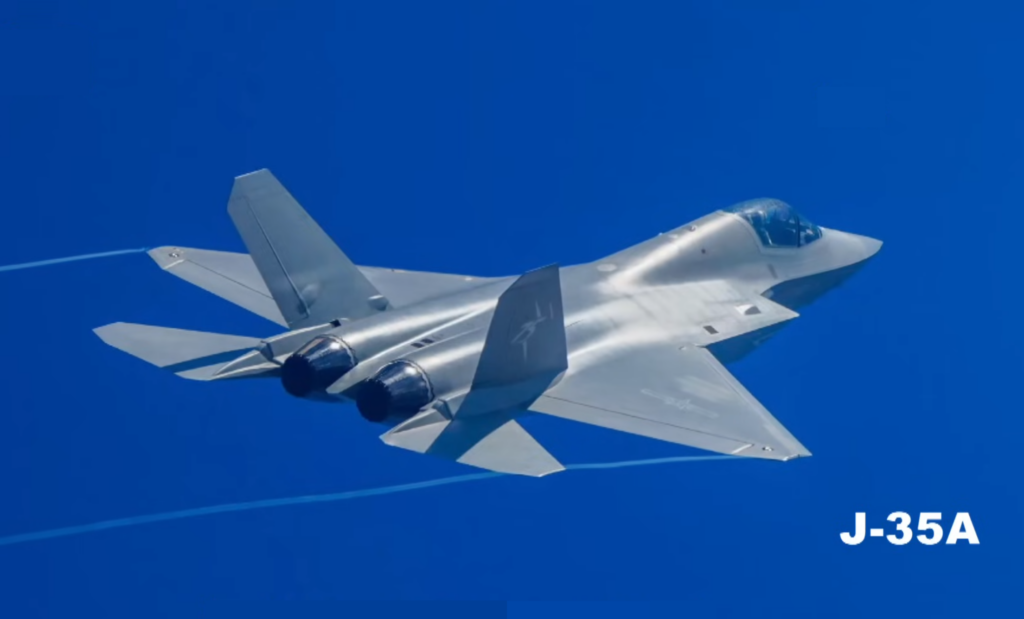
How does China’s new J-35 stealth fighter compare to America’s F-35?
Sandboxx News
-

‘Sandboxx News’ Trucker Cap
$27.00 Select options This product has multiple variants. The options may be chosen on the product page -

‘AirPower’ Classic Hoodie
$46.00 – $48.00 Select options This product has multiple variants. The options may be chosen on the product page -

‘AirPower’ Golf Rope Hat
$31.00 Select options This product has multiple variants. The options may be chosen on the product page -

‘Sandboxx News’ Dad Hat
$27.00 Select options This product has multiple variants. The options may be chosen on the product page
